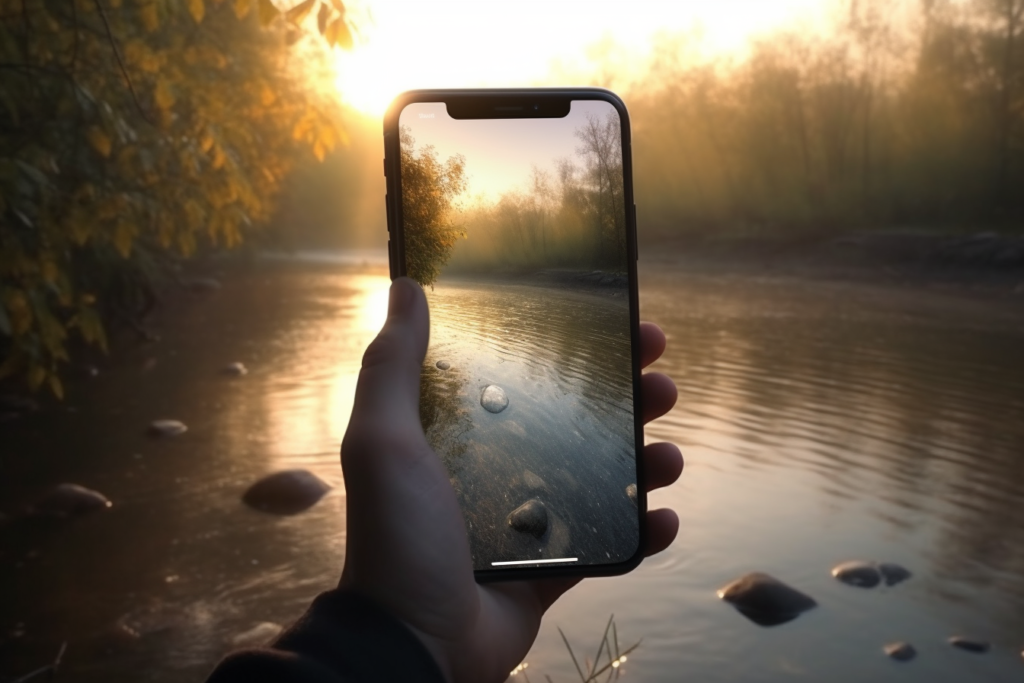Are you feeling burned out, stressed, or overwhelmed by the constant barrage of notifications, emails, and social media updates? You’re not alone. In today’s digital age, it’s easy to fall into the trap of spending too much time glued to screens, which can take a toll on our mental and physical health. Fortunately, a digital detox can help you escape the screen trap and reclaim your life.

In this ultimate guide to a digital detox, we’ll explore everything you need to know about unplugging from technology and reconnecting with the world around you. From understanding the benefits of a digital detox to assessing your screen time, setting goals, planning your detox, and staying mindful and present, we’ll cover all the essentials to help you embark on a successful digital detox journey.
Key Takeaways
- A digital detox can help you escape the screen trap and improve your mental and physical health.
- Understanding the benefits of a digital detox and assessing your screen time are important first steps.
- Setting goals, planning your detox, and staying mindful and present can help you have a successful digital detox experience.
Understanding the Digital Detox
As we become increasingly dependent on technology, it’s becoming more challenging to disconnect from our digital devices. A digital detox is a period when an individual refrains from using digital devices such as smartphones, televisions, computers, tablets, and social media sites. In this section, we’ll explore the definition, benefits, and real-life consequences of screen addiction.
Definition of a Digital Detox
A digital detox involves reducing screen time on your devices in favor of restoring a connection to the world around you. It’s a way to take a break from the constant barrage of notifications, emails, and social media updates that can be overwhelming. The goal of a digital detox is to create a healthy balance between technology and the rest of your life.
Benefits of a Digital Detox
There are many benefits to taking a break from technology. A digital detox can help reduce stress, anxiety, and depression. It can also improve sleep quality and increase productivity. By disconnecting from technology, we give ourselves time to focus on other activities that we enjoy, such as spending time with loved ones, exercising, or reading a book.
Real-Life Consequences of Screen Addiction
Screen addiction can have real-life consequences on our mental and physical health. Dopamine, a chemical in our brain, is released when we receive notifications or engage with social media. This can create a cycle of addiction, where we crave the next notification or update. This addiction can lead to anxiety, depression, and other mental health issues.
In addition to mental health issues, screen addiction can also lead to physical health problems such as eye strain, headaches, and neck pain. It can also lead to a sedentary lifestyle, which can increase the risk of obesity, heart disease, and diabetes.
In conclusion, a digital detox is an essential part of maintaining a healthy balance between technology and the rest of your life. By understanding the definition, benefits, and real-life consequences of screen addiction, we can make informed decisions about how we use technology in our daily lives.
Assessing Your Screen Time
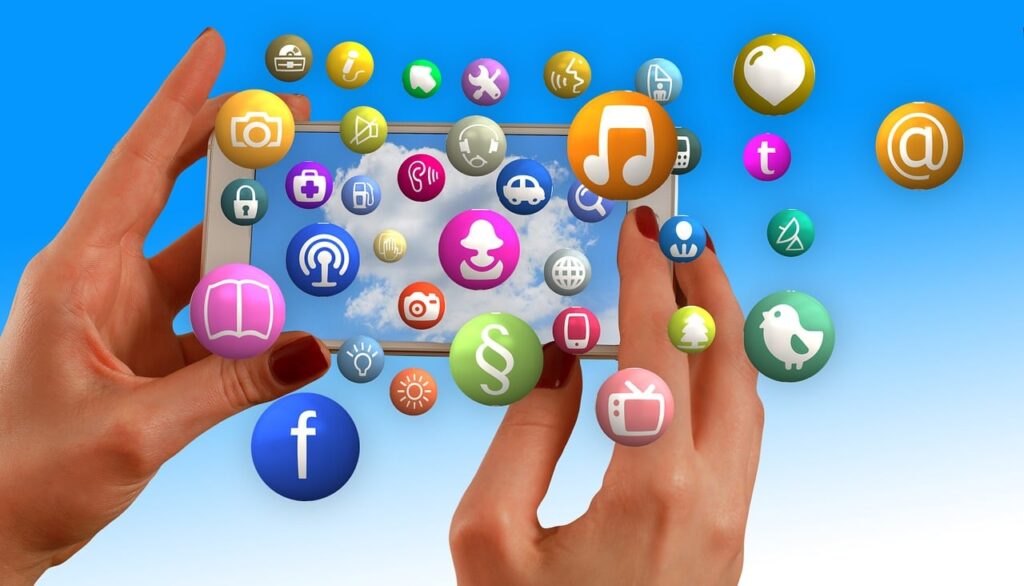
As we become increasingly dependent on technology, it is important to assess our screen time to ensure that we are not falling into the trap of excessive use. Here are a few sub-sections that will help you evaluate your screen time habits:
Tools and Apps for Tracking Screen Time
There are several tools and apps available that can help you track your screen time. For example, Apple’s Screen Time feature allows you to see how much time you spend on your iPhone or iPad and which apps you use the most. Similarly, Google’s Digital Wellbeing feature provides a dashboard that shows your app usage, notifications, and other data.
Understanding Your Personal Screen Time Habits
Once you have access to your screen time data, it’s important to understand your personal screen time habits. Are you spending too much time on social media? Are you constantly checking your phone for notifications? Are you using your phone or tablet before bed? By identifying these habits, you can start to make changes to reduce your screen time.
Identifying Problem Areas
After understanding your personal screen time habits, it’s important to identify problem areas. For example, if you find that you are spending too much time on social media, you can set limits on your usage or delete the app altogether. If you are constantly checking your phone for notifications, you can turn off notifications or put your phone on silent mode.
By assessing your screen time, you can take steps to reduce your usage and break free from the screen trap.
Related Posts:
- Unleash Productivity: Your Ultimate Guide to Master Time Management
- Tick-Tock, Time’s Up: Effective Time Management Techniques
Setting Your Digital Detox Goals

When it comes to digital detoxing, it’s important to set clear goals to ensure success. In this section, we’ll discuss the importance of clear goals, short-term and long-term detox objectives, and SMART goal setting.
Importance of Clear Goals
Setting clear goals is essential for any self-care or well-being practice. It helps you stay focused and motivated, and it provides a clear direction for your efforts. Without clear goals, it’s easy to get sidetracked or lose sight of why you started in the first place.
Short-Term and Long-Term Detox Objectives
When setting your digital detox goals, it’s important to consider both short-term and long-term objectives. Short-term goals are smaller, more manageable objectives that can be achieved in a shorter amount of time, such as a week or a month. Long-term goals are larger, more significant objectives that may take several months or even years to achieve.
For example, a short-term goal might be to limit your social media use to 30 minutes per day, while a long-term goal might be to go on a weekend retreat without any technology.
SMART Goal Setting
To ensure that your goals are achievable and effective, it’s important to use the SMART goal-setting framework. SMART stands for Specific, Measurable, Achievable, Relevant, and Time-bound.
Specific: Your goal should be clear and specific, with a well-defined outcome.
Measurable: Your goal should be measurable, so you can track your progress and determine when you’ve achieved it.
Achievable: Your goal should be realistic and achievable, given your current circumstances and resources.
Relevant: Your goal should be relevant to your overall well-being and digital detox objectives.
Time-bound: Your goal should have a specific deadline or timeframe for completion.
By using the SMART framework, you can set goals that are both challenging and achievable, and that will help you make meaningful progress towards your digital detox objectives.
Related Posts:
- From Dreamer to Achiever: The Ultimate Guide to Personal Goals
- Mastering Habit Change: The Ultimate Guide to Replacing Bad Habits with Good Ones
- Mastering Self-Discipline: Be Your Own Hero and Unlock Your Potential
Planning Your Detox
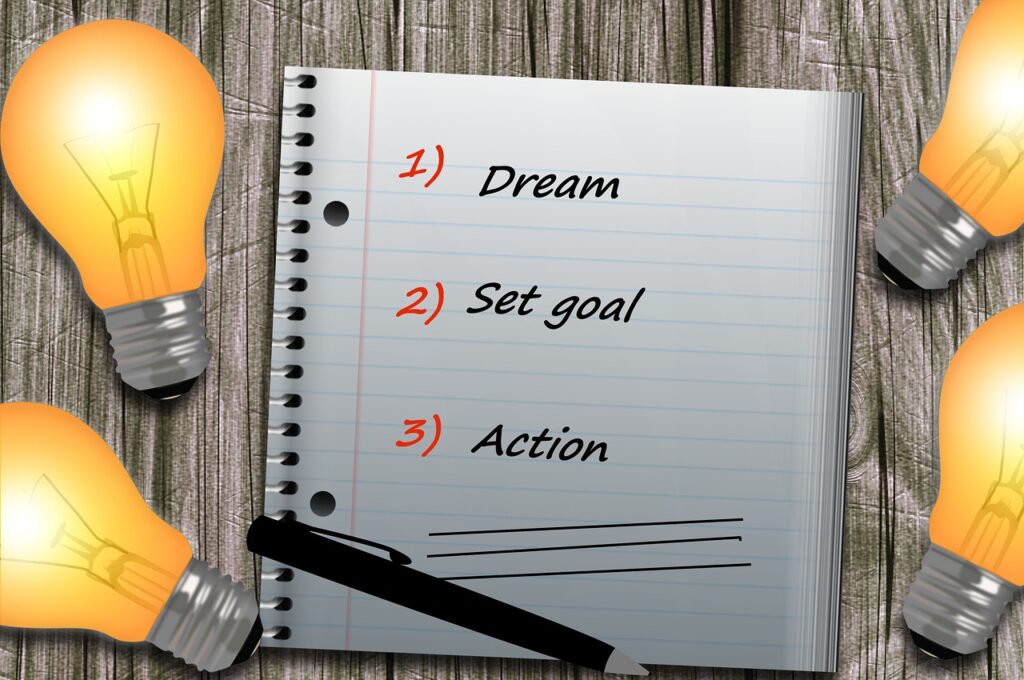
Are you ready to take the plunge and commit to a digital detox? Great! Here are some tips to help you plan your detox period and make the transition as smooth as possible.
Scheduling Your Digital Detox Period
First things first, decide how long you want your digital detox to last. It could be a day, a weekend, a week, or even longer. Whatever you choose, make sure it’s a realistic timeframe that you can commit to.
Once you’ve decided on the duration, mark it on your calendar and plan your activities accordingly. You may want to schedule some downtime, relaxation, or self-care activities during your detox period to help you stay grounded and focused.
Announcing Your Detox to Friends and Family
Let your friends and family know about your digital detox plans in advance. This will help them understand why you may be less available or responsive during that time. You can also ask them to join you in the detox or support you in other ways.
If you’re worried about missing out on important messages or notifications, you can set up an auto-reply message to let people know that you’re taking a break from technology and will get back to them after your detox period.
Making Necessary Work or School Arrangements
If you have work or school commitments during your detox period, plan ahead and make necessary arrangements. You may need to inform your colleagues or professors about your absence or delegate some tasks to others.
If you can’t completely disconnect from technology, try to limit your use to only what’s necessary for work or school purposes. Avoid checking your personal emails or social media accounts during this time.
In conclusion, planning your digital detox period is crucial to its success. By scheduling your detox, announcing it to friends and family, and making necessary work or school arrangements, you can minimize stress and distractions and focus on your self-care.
Preparing for Your Detox
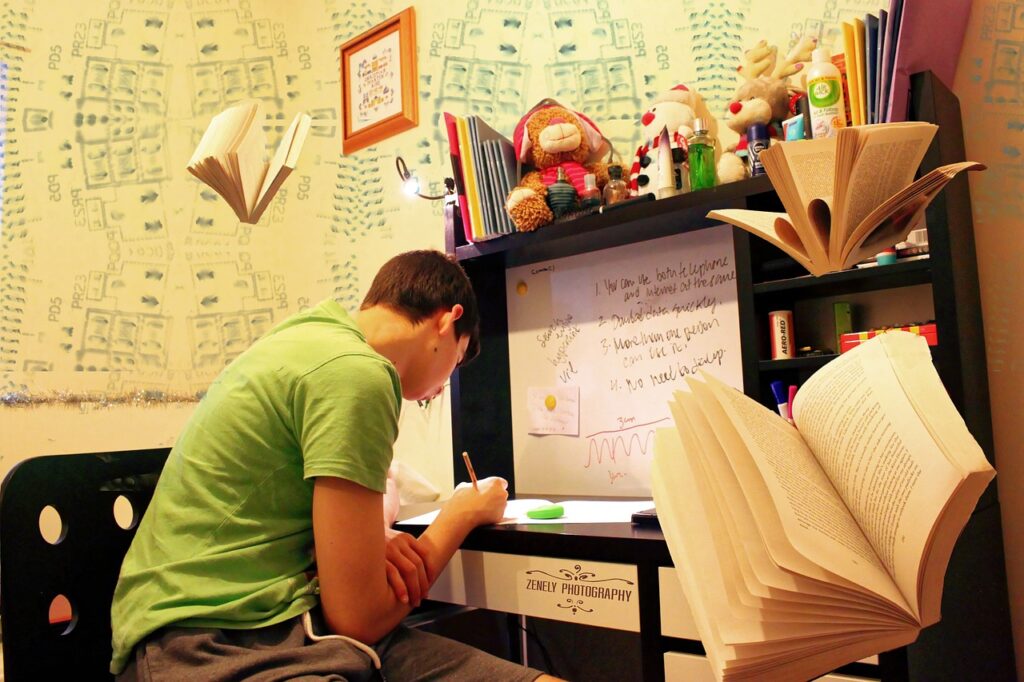
Before embarking on your digital detox journey, it’s important to prepare yourself and your digital workspace. Here are some tips to help you get started:
Clearing Your Digital Workspace
Take some time to declutter your digital workspace. Delete any unnecessary files or apps that you no longer use. Organize your desktop and files into folders, so that you can easily find what you need. This will help you to feel more organized and less overwhelmed when you return to your devices after your detox.
Backing Up Important Data
Before you begin your detox, make sure to back up any important data. This includes documents, photos, and any other important files that you may need in the future. You can back up your data to an external hard drive or cloud storage service. This will give you peace of mind knowing that your important data is safe and secure.
Organizing Alternative Offline Activities
Plan some alternative offline activities to keep yourself busy during your detox. This could include reading a book, going for a walk, or trying a new hobby. By having a plan in place, you’ll be less likely to reach for your devices out of boredom.
Remember, the goal of a digital detox is to take a break from your devices and screens. By preparing yourself and your digital workspace ahead of time, you’ll be setting yourself up for success.
Related Posts:
Your Digital Detox Experience

Embarking on a digital detox can be a challenging yet rewarding experience. Here are some tips and insights to help you make the most out of your detox journey.
Daily Routines and Activities During Detox
During your digital detox, it’s important to establish a daily routine that doesn’t involve screens. This can include activities such as reading a book, going for a walk, practicing yoga, or spending time with loved ones. It’s also important to set boundaries and limit your exposure to screens, especially during mealtimes and before bed.
Coping with Withdrawal Symptoms
Going cold turkey on screens can result in withdrawal symptoms such as anxiety, irritability, and restlessness. To cope with these symptoms, it’s important to practice self-care and engage in activities that promote relaxation and stress relief. This can include meditation, deep breathing exercises, or taking a warm bath.
Success Stories and Challenges from Real Detox Experiences
Many people have successfully completed digital detoxes and have reported improvements in their mental health, self-esteem, and overall well-being. However, it’s important to acknowledge that detoxing from screens can be challenging and may require support from friends, family, or mental health professionals. Some common challenges include boredom, FOMO (fear of missing out), and the temptation to check your phone or computer.
Related Posts:
- Journey to Bliss: An Uncharted Path to Inner Serenity
- Stress-Busting Secrets: The Ultimate Guide to Cultivating Calm Amid Chaos
Staying Mindful and Present
Staying mindful and present is essential in achieving a successful digital detox. It helps us reconnect with ourselves and our surroundings, leading to improved mental health and overall well-being. Here are some techniques to help you stay mindful and present during your digital detox.
Practicing Mindfulness Exercises
Practicing mindfulness exercises can help you stay present and focused on the moment. You can start by taking deep breaths and focusing on your breaths. You can also try body scan meditation, where you focus on each part of your body, starting from your toes to the top of your head. Mindful walking is another exercise that can help you stay present and aware of your surroundings.
Cultivating Face-to-Face Social Interactions
Social interactions are crucial for our mental health and well-being. During your digital detox, make an effort to spend time with family and friends in person. You can plan a picnic, go for a hike, or have a game night. Engaging in face-to-face interactions can help you feel more connected and less isolated.
Techniques for Staying Present in the Moment
There are several techniques you can use to stay present in the moment. One technique is to practice gratitude. Take a few moments each day to think about the things you are grateful for. Another technique is to focus on your senses. Take a few moments to observe your surroundings and focus on what you can see, hear, smell, taste, and touch.
Staying mindful and present during your digital detox can help you reap the benefits of improved mental health and well-being. Try incorporating these techniques into your daily routine to stay present and connected.
Related Posts:
- Mastering Mindfulness: The Ultimate Guide to Boosting Well-being by Living in the Now
- Meditation Mastery: Beginner’s Blueprint to Inner Peace
Navigating Digital Life Post-Detox

Congratulations on completing your digital detox! You have taken a significant step towards establishing healthy boundaries with technology and reclaiming control of your life. However, it’s essential to remember that the digital world is an integral part of our lives, and complete avoidance is not realistic. Here are some tips to help you navigate digital life post-detox.
Gradual Reintegration of Screens
Now that you have taken a break from screens, it’s important to ease back into digital life gradually. Start by identifying the essential apps and devices that you need to use and prioritize them. You can also limit your screen time by setting specific hours for checking email or social media. Gradually increase your screen time as you feel comfortable, but always be mindful of how much time you spend online.
Establishing Healthy Screen Time Boundaries
One of the most important things you can do to maintain a healthy relationship with technology is to establish boundaries. Set limits on the amount of time you spend on your phone or computer each day, and stick to them. You can also turn off notifications for non-essential apps to reduce distractions and increase focus. Additionally, consider implementing a “no screens” policy during certain times of the day, such as mealtime or before bed.
Resources for Ongoing Support and Accountability
Maintaining a healthy relationship with technology is an ongoing process, and it’s essential to have support and accountability. Consider joining a support group or seeking out a therapist who specializes in technology addiction. You can also use apps like Moment or Forest to track your screen time and set goals for reducing it. Remember, you are not alone in this journey, and there are many resources available to help you.
Related Posts:
- Listen Up! How Active Listening Can Revolutionize Your Relationships
- Ultimate Guide to Self-Awareness: Unveiling the Real You and Achieving Personal Enlightenment
Conclusion
We hope this guide has been helpful in providing you with the information you need to embark on your own digital detox journey. Remember, reducing screen time can have a positive impact on your mental health and overall well-being.
Whether you choose to do a social media detox, express detox, digital abstinence, or targeted detox, it’s important to find a format that works for you. Consider setting specific goals and boundaries for yourself, such as limiting screen time before bed or during meals.
Don’t be afraid to seek support from friends and family, or even professional help if needed. Remember, a digital detox is not about completely unplugging from the world, but rather finding a healthy balance that allows you to connect with the world around you.
So go ahead, take the first step and give yourself a break from the screen trap. Your mind and body will thank you for it!
Frequently Asked Questions
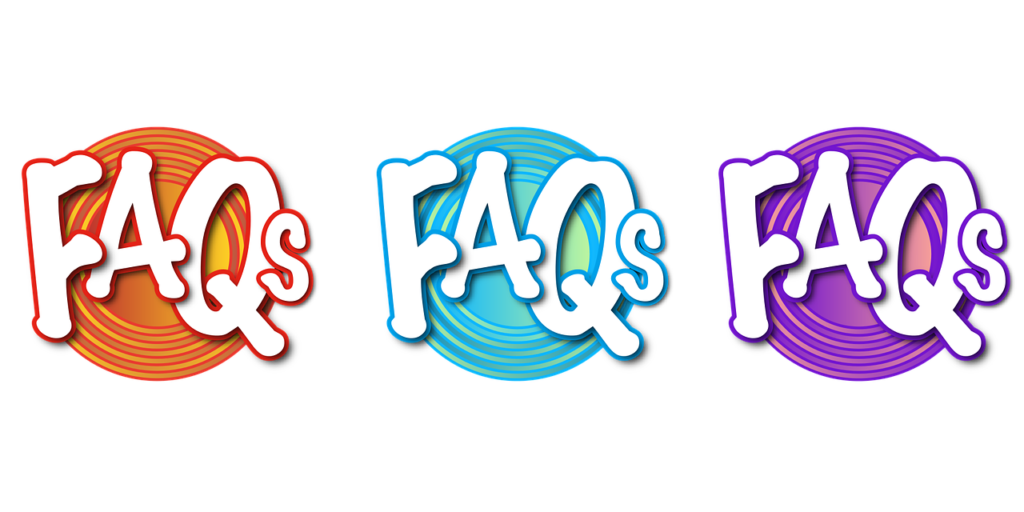
What are some effective ways to quit video games cold turkey?
If you want to quit video games cold turkey, consider deleting all of your games and accounts, or giving away your gaming console. You can also try replacing your gaming habit with a new hobby, like reading or exercising. It may also be helpful to find a support group or accountability partner to help you stay on track.
How can an information detox benefit my mental health?
An information detox can benefit your mental health by reducing stress and anxiety, increasing focus and productivity, and improving sleep quality. By disconnecting from technology and limiting exposure to news and social media, you can give your brain a break and create space for relaxation and self-reflection.
What are some tools or resources available to help with digital addiction?
There are many tools and resources available to help with digital addiction, including apps like Freedom and Forest that limit screen time, and websites like Digital Detox and Unplugged Retreats that offer retreats and workshops to help people unplug and reconnect with themselves and nature.
How long does it typically take to complete a successful screen detox?
The length of a successful screen detox can vary depending on the individual and their level of addiction. Some people may benefit from a short break, while others may need a longer period of time to reset and establish healthier habits. It’s important to listen to your body and do what feels right for you.
What are some potential drawbacks of a digital detox?
While a digital detox can have many benefits, there are also potential drawbacks to consider. You may experience withdrawal symptoms like anxiety and irritability, and you may also feel disconnected from friends and family who rely on technology to communicate. It’s important to have a plan in place to address these challenges and stay motivated.
Is there a helpline or charity I can reach out to for support with gaming addiction?
Yes, there are helplines and charities available to provide support for gaming addiction. The National Council on Problem Gambling offers a helpline for people struggling with gaming addiction, and organizations like Game Quitters and Reset Summer Camp offer resources and support for people looking to quit gaming.

